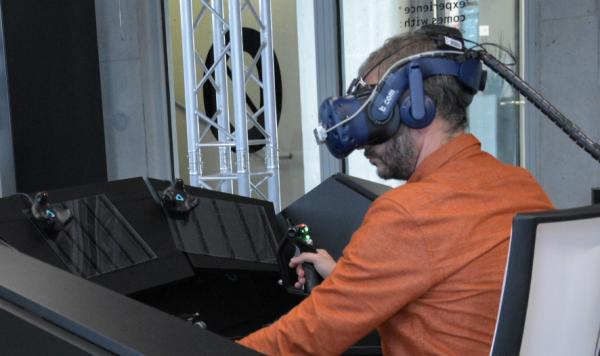Increasingly, manufacturers are placing human factors at the heart of their development. Objectives: improve resilience, risk management, and encourage the adoption of new technologies or environments. Guillaume Calvet, DRD of Human Design Group, looks back on the collaboration with b<>com and its contribution to developing solutions human factors-based innovations.
HDG and b<>com have pooled their expertise for several years. What are the results?
We have been associated with b<>com for over five years, working together on cognitive technologies for industrial engineering. On the Human Design Group side, we bring our sector-specific expertise in human factors and in-depth knowledge of user-centered design processes in various sectors.
b<>com provides advanced engineering technologies and boosts our development capabilities. Collaborating with an IRT is an element of differentiation that brings real added value regarding the robustness and state-of-the-art nature of the solutions we offer industrials.

Tools developed together offer critical reference points for industrialists in their strategic orientation, bringing greater visibility to investment choices, accelerating their design process, and better controlling their ROI.
How does your collaboration with b<>com enrich your services?
The technologies we have developed together enable our customers to explore and interact virtually with the future equipment they wish to implement and to derive behavioral analysis from users' psychophysiological states. We've improved exposure to immersive technologies while minimizing the risk of cyber-sickness.
These are real tools for optimizing the upstream design of work environments, especially complex, high-risk ones. They provide key benchmarks for industrialists in their strategic differentiation strategy, giving them greater visibility in their investment choices, accelerating their design process, and better ROI controlling.
The accessibility of collected data is also facilitated by the creation of interfaces, giving them a more operational dimension. Data for visualization, monitoring, and exporting cognitive signals are translated into interfaces that each user can access and exploit.
We also deploy the multi-user uses of solutions, developing the collective, collaborative, and remote dimensions. Moreover, the IRT's varied and complementary skills in design, algorithm generation and processing, and data interpretation via AI remain a valuable asset.
Together, HDG and b<>com have developed the cockpit of the future, integrating tomorrow's intelligent co-pilot. Several concepts were tested using various technologies, such as augmented reality and sound assistants, and their use was closely observed.
What are the prospects for human factors analysis?
Today, modeling and designing test environments is very time-consuming. These obstacles are set to be overcome thanks to artificial intelligence, which will significantly facilitate the creation of virtual reality test environments. It will be possible to create more and more of them faster and cheaper, which will democratize their use. Considerably larger volumes of data can be processed and analyzed. Eventually, AI can manipulate the tools, moving from man-machine interaction to man-machine collaboration.
In addition, the reduction in weight and size of virtual reality headsets, the development of more sophisticated haptic devices, and the overall improvement in immersive technologies will enable ever more realistic experiences. Applications are likely to focus on improving safety and productivity in the workplace, with applications in high-risk sectors such as energy, industry, aerospace, medicine, and defense.




